A persistent and insistent tseep-tseep-tseep outside the bedroom window attracted my attention. Looking out I saw a fledgling perching on top the fence to the cat’s garden, calling repeatedly, reminding its parent to feed it.
Begging for food is evidently hard work and requires a lot of concentration. But now and again the fledgling’s attention lapsed and it practiced spreading its wings and it even played with some dry leaves stuck in section of the fence, flicking them around. But mostly it kept its insistent call going continuously, opening its mouth repeatedly as if to make clear what its entreaties were all about.
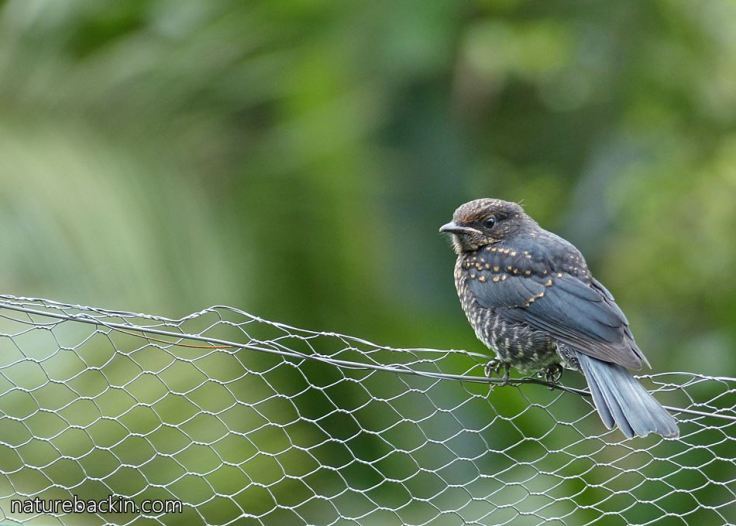
A fledgling Southern Black Flycatcher, waiting for its parent to bring it some food
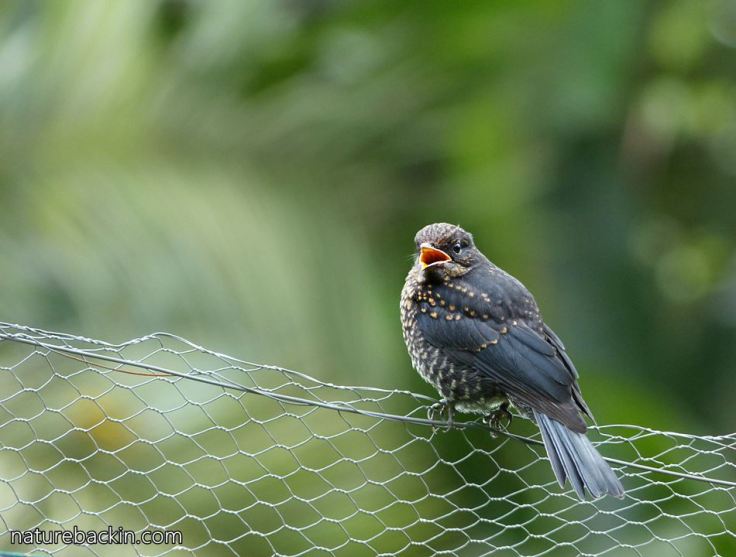
Its constant requests for food seemed unrelenting
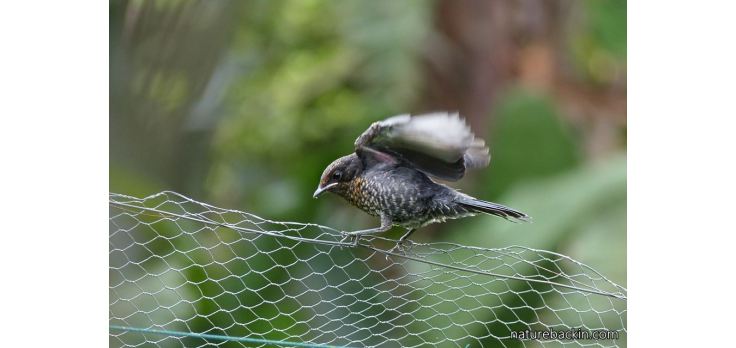
It paused from its calling briefly to stretch its wings and hop along the fence perhaps out of frustration, or perhaps hoping to draw its parent’s attention
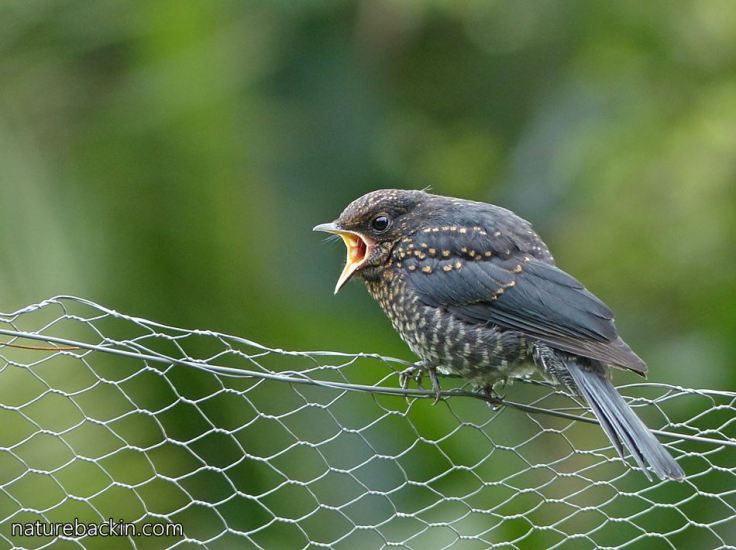
Seeing its parent approaching, the fledgling widens its gape in anticipation

The hardworking and ever obliging mother appeared with an insect in its bill, which it rapidly deposited into the youngster’s gaping mouth, only temporarily satisfying the hungry youngster
I first posted about Southern Black Flycatchers here, and this is the first time I have been lucky enough to see a fledgling.
Southern Black flycatchers form monogamous pairs when breeding. The female builds the nest, though she is accompanied by the male when gathering nest materials. Usually a cup-shaped hollow in a tree or in other vegetation is found, which she lines with plant material. In KwaZulu-Natal these flycatchers lay between 1 to 3 eggs, and the eggs are incubated by the female.
Both adults feed nestlings and fledglings, but on the two successive days when we saw this fledgling, it was accompanied by only one parent, apparently the female, and she worked tirelessly, feeding the baby on insects that she had hawked or caught on the ground.

As soon as she had fed the baby the adult immediately started watching for prey, the fence providing a good vantage point, with the baby keeping up a continuous series of repetitive chirpings
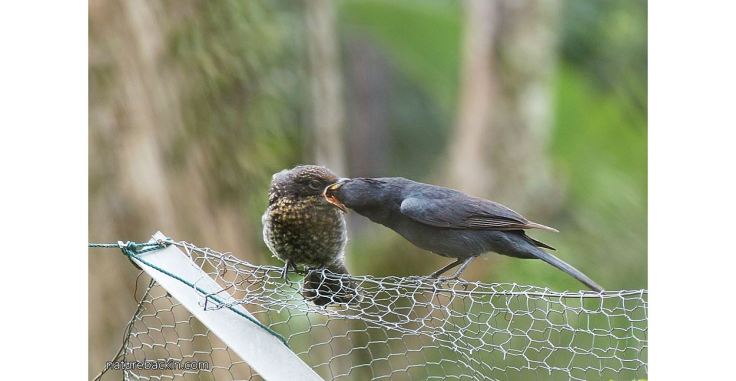
The baby did not have to wait long for the next food item. As the mother approached it widened its gape and she quickly thrust the morsel down the baby’s throat
It was astonishing to see the pace the parent kept up, working without her mate to feed the hungry fledgling on her own. We saw them on the same stretch of fence for two days in a row. When they decided to move on, we were surprised at how well the fledgling could fly.
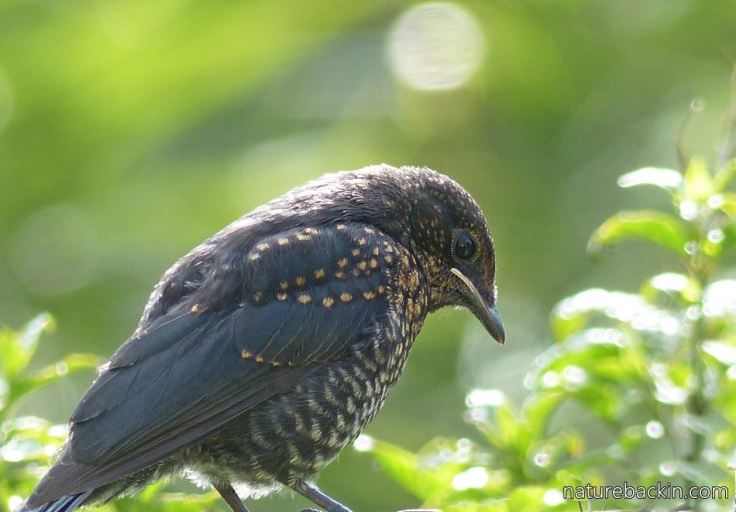
The second morning was sunny and I was able to get this back-lit shot of the baby waiting for its next morsel of food
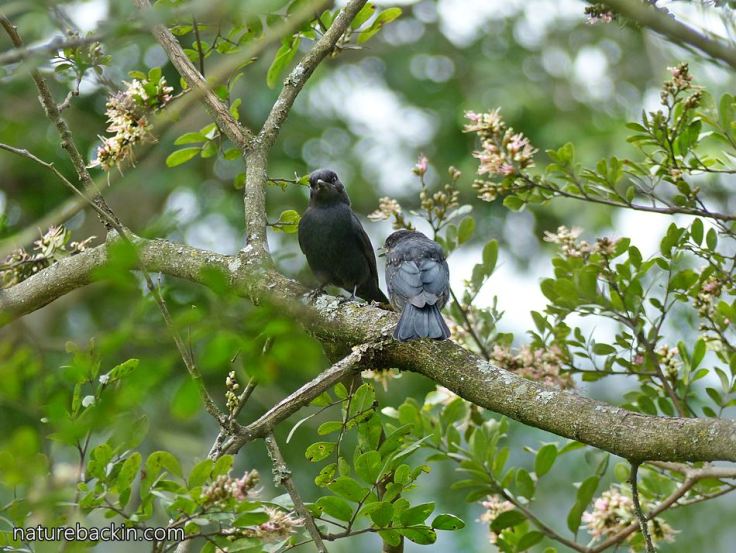
Later in the day I heard it calling from the branches of a Forest Boer-bean (Schotia latifolia). I crept up as discreetly as I could and managed to snap one photo before they flew off. I was disappointed that I disturbed them and also because the flowering tree is a lot more photogenic than the fence
Source: Roberts VII Multimedia PC Edition. 1997-2016 Southern African Birding. For details go to http://www.sabirding.co.za/roberts7/portal.html
Posted by Carol

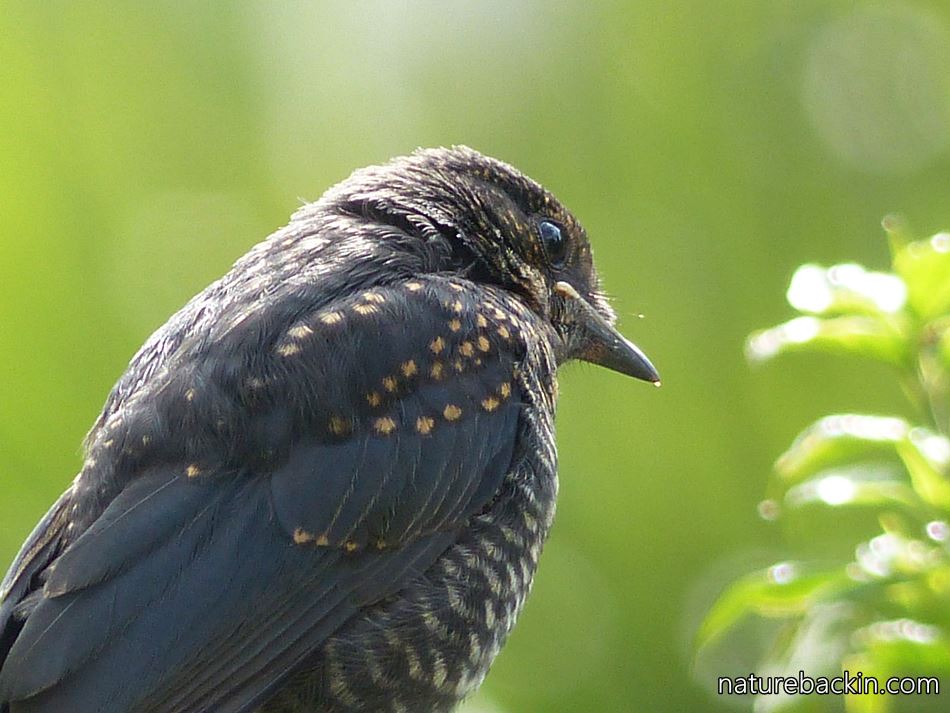







December 2, 2017 at 8:44 am
Amazing shots, Carol!
LikeLiked by 1 person
December 3, 2017 at 3:36 am
Thanks very much, Pete.
LikeLiked by 1 person
December 2, 2017 at 8:02 am
I am reading this while having breakfast and found it so interesting I forgot to feed myself!
LikeLiked by 1 person
December 3, 2017 at 3:34 am
🙂
LikeLike
December 2, 2017 at 2:42 am
Reminds me of some of the teenagers I saw at the shops yesterday!
Beautiful, beautiful photographs!
LikeLiked by 1 person
December 2, 2017 at 3:58 am
Thanks so much. The young of some species take ages to fledge 🙂
LikeLiked by 1 person
December 2, 2017 at 12:55 pm
😀
LikeLike
December 2, 2017 at 1:12 am
Wonderful images, Carol, I love the fledgling’s speckled plumage. I always am amazed at how hard birds work to feed their young. The whole breeding cycle is relatively short, but intense!
LikeLiked by 1 person
December 2, 2017 at 3:57 am
Thanks Eliza. The speckles are particularly striking in contrast to the parent’s matt black. The breeding cycle is incredibly intense.
LikeLiked by 1 person
December 1, 2017 at 2:15 pm
Carol, such a lovely post. Just love the photos 😊😊
LikeLiked by 1 person
December 2, 2017 at 3:56 am
Thanks so much Marica. Evidently it is possible to be simultaneously demanding and cute 🙂 Not just anyone can manage that though!
LikeLike
December 1, 2017 at 9:45 am
Great captures. I really enjoyed this series.
LikeLiked by 1 person
December 2, 2017 at 3:54 am
Thanks so much Hester. I enjoyed sharing photos of this charming though demanding little bird.
LikeLiked by 1 person
December 1, 2017 at 9:41 am
These are beautiful shots, Carol. I managed to snap a few of a pair of White Bellied Sunbirds feeding their chick last year and a few days ago I was extremely fortunate to photograph a pair of White Eyes feeding their chick. (I put fruit out on old tree stumps and branches)
The final ”head cocked ” shot of this great set is wonderful. The expression on the parent’s face is priceless!
LikeLiked by 1 person
December 2, 2017 at 3:53 am
Thanks Ark. The parent bird is remarkably expressive. How amazing to see tiny sunbirds and White-eyes feeding their young! I have not been able to visit sites much as our ADSL line has been down for nearly three weeks now, and we are having to ration our data usage on our wireless dongle modem. When one day the ADSL line is fixed (I am such an optimist!) I will be visiting again.
LikeLiked by 1 person
December 2, 2017 at 8:30 am
Ah, yes, the joys of the internet, and I’m guessing Telkom?
We were out for over month up here in Obs a couple of years ago – cable theft, of course.
There are blokes working in the suburb at the moment installing fibre optics so I am hoping cable theft will one day be a thing of the past.
LikeLiked by 1 person
December 3, 2017 at 3:36 am
You guessed right. Here too fibre is being installed nearby, and LTE coverage is being expanded, but not in our neck of the woods yet … looking forward!
LikeLiked by 1 person
December 1, 2017 at 8:31 am
What a fantastic and engrossing photo-essay. Thank you. What a life though. Who’d be a mother flycatcher?
LikeLiked by 1 person
December 2, 2017 at 3:43 am
Thanks Margaret. Hopefully the fledgling will be able to feed itself soon and the mother can relax a bit. No wonder she looks so intense!
LikeLiked by 1 person
December 1, 2017 at 5:48 am
Honestly spellbinding pictures and backed up with your knowledgeable script this was a post to treasure. Thank you
LikeLiked by 1 person
December 2, 2017 at 3:38 am
Thanks so much Osyth.
LikeLiked by 1 person
December 1, 2017 at 4:48 am
Amazing captures!
LikeLiked by 1 person
December 2, 2017 at 3:34 am
Thanks Rebel Girl.
LikeLiked by 1 person
December 1, 2017 at 4:36 am
Oh, I loved the fence photos!
LikeLiked by 1 person
December 2, 2017 at 3:34 am
Thanks Nikki 🙂
LikeLike
December 1, 2017 at 4:34 am
The tenacity of the parent in feeding fledglings always amazes me.
And then to think some species have several clutches of eggs in one season!
LikeLiked by 1 person
December 2, 2017 at 3:33 am
Tenacity is the word. I wonder when they take to time to feed themselves when they have other demanding mouths to feed.
LikeLiked by 1 person
December 2, 2017 at 4:18 am
I have always wondered about that, too. They are so focused and devoted.
LikeLiked by 1 person
December 1, 2017 at 4:26 am
Fantastic photographs!
LikeLiked by 1 person
December 2, 2017 at 3:29 am
It was special to be able to see the pair of them relatively close up through the open window.
LikeLike